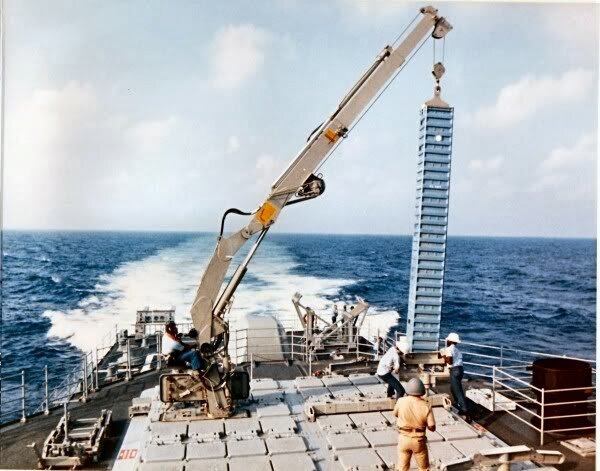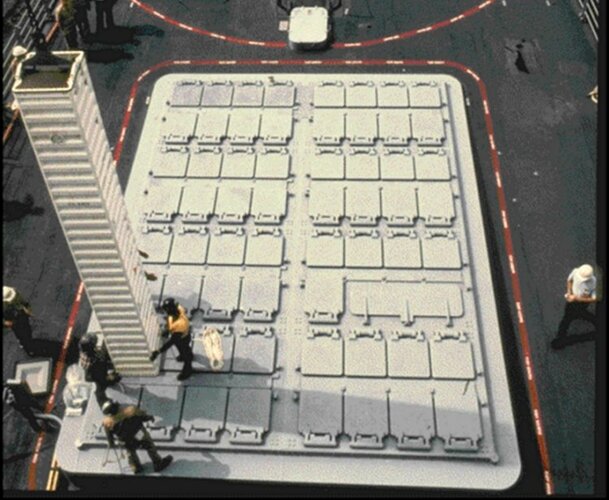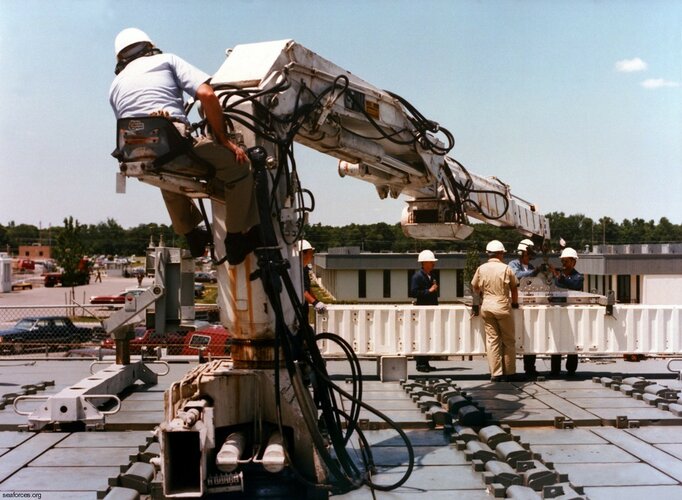Maybe its time to develop a better arm launcher that can be reloaded at sea like in the old days. Or design a VLS that can be reloaded at sea. It seems odd that you can strikedown missiles through a small hatch like in the case of Mk-26 but not a VLS cell that looks about equal size.
You are using an out of date browser. It may not display this or other websites correctly.
You should upgrade or use an alternative browser.
You should upgrade or use an alternative browser.
Surface Ships Need More Offensive Punch, Outlook
- Thread starter Triton
- Start date
-
- Tags
- cold war ii
That's because in the old launchers (which were both maintenance and space-intensive), the missile was the round, and the launcher was the storage, whereas in a VLS system, the canister is the round AND the storage.Maybe its time to develop a better arm launcher that can be reloaded at sea like in the old days. Or design a VLS that can be reloaded at sea. It seems odd that you can strikedown missiles through a small hatch like in the case of Mk-26 but not a VLS cell that looks about equal size.
In the old launchers the provisions for guiding a round on a certain path were all build-in: The missile was allways moved under positive control.
In a VLS system, there's no systems for moving a round around at all. Which is why you need external equipment to reload VLS cells. If you give VLS cells the equipment for positive movement control over the rounds (the cells), you give up on two of the major advantages of a VLS system: Reduced maintenance, and reduced space, because you're adding stuff back in which was taken out when transferring to VLS.
How are VLS cells loaded in port? Is it a simple crane? I assume the problem is one of stability and seastate? I would have thought any seastate that allowed for UNREP should allow for some a transfer of maanutions by crane, but it would probably require a very large crane to be stable enough and possible some kind of guide/alignment mechanism on the target to eliminate sway. The USN does employ a half dozen heavy lift crane ships; it should be possible to use them in this role with a little modification I would think.
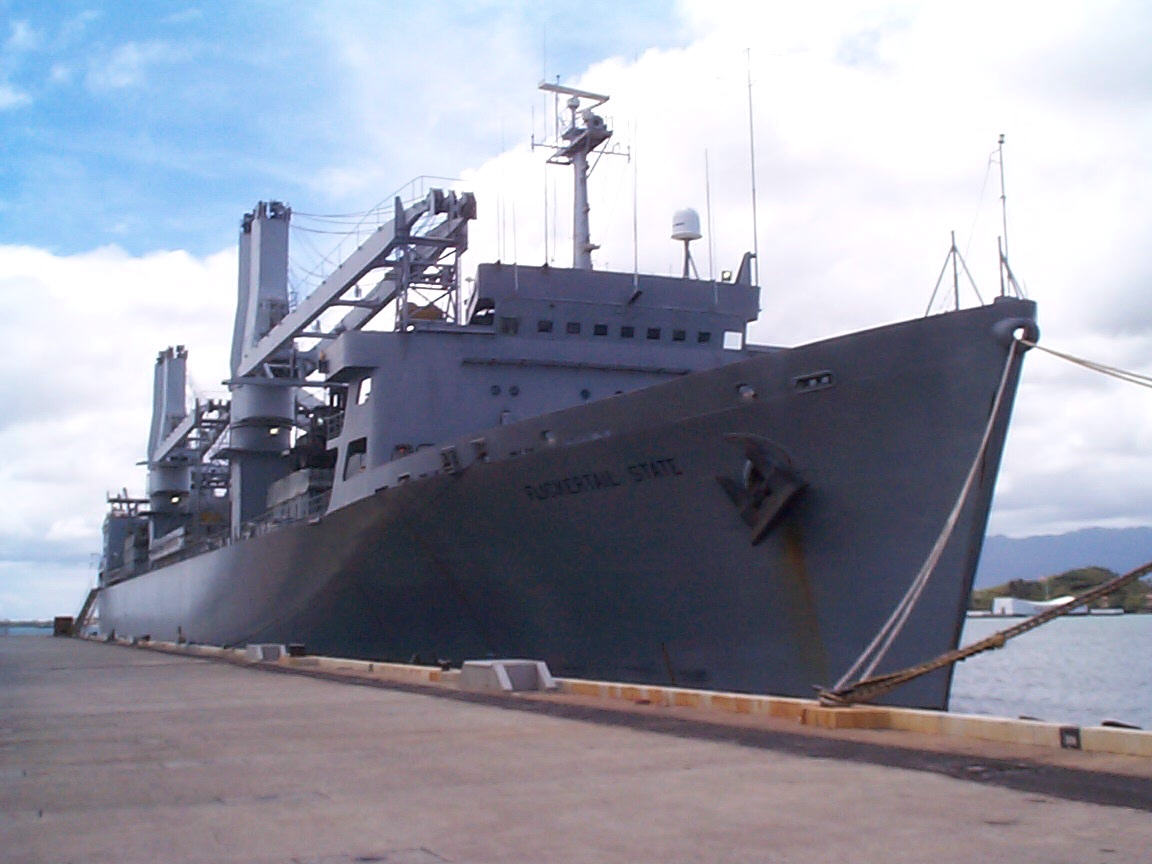
 en.wikipedia.org
en.wikipedia.org
Of course the question I would have is whether the USN has enough missile inventory such that reloading is even a serious concern to begin with. Anecdotally I've heard that a lot of ships go out half empty; I don't know for a fact that it is true and if it is, this many simply be to reduce wear and tear deployment time on the ordnance rather than a dearth of ammunition, but its a question worth asking.

SS Flickertail State - Wikipedia
Of course the question I would have is whether the USN has enough missile inventory such that reloading is even a serious concern to begin with. Anecdotally I've heard that a lot of ships go out half empty; I don't know for a fact that it is true and if it is, this many simply be to reduce wear and tear deployment time on the ordnance rather than a dearth of ammunition, but its a question worth asking.
Firefinder
ACCESS: Top Secret
- Joined
- 5 October 2019
- Messages
- 1,049
- Reaction score
- 1,902
It how you have to load up the VLS is the problem.How are VLS cells loaded in port? Is it a simple crane? I assume the problem is one of stability and seastate? I would have thought any seastate that allowed for UNREP should allow for some a transfer of maanutions by crane, but it would probably require a very large crane to be stable enough and possible some kind of guide/alignment mechanism on the target to eliminate sway. The USN does employ a half dozen heavy lift crane ships; it should be possible to use them in this role with a little modification I would think.

SS Flickertail State - Wikipedia
en.wikipedia.org
Of course the question I would have is whether the USN has enough missile inventory such that reloading is even a serious concern to begin with. Anecdotally I've heard that a lot of ships go out half empty; I don't know for a fact that it is true and if it is, this many simply be to reduce wear and tear deployment time on the ordnance rather than a dearth of ammunition, but its a question worth asking.
Most of the new missiles are 20 foot long, with the Hypersconics lookign at being 30 foot long.
Which means you need to have a crane able to go up about... Call it 50 foot tall.
Since you need to load the missile vertical, in any seastate that is not lable as glass, at little movement on the ship will get the missile swinging back and forth dangerously even with tie downs on the bottom.
Then you run into the issue of what to do with the missile casing that holds the missile to launch. With the old arm launchers it was easy enough to collapse them down by hand and send the them back on the other crane since the missile came in 10 foot sections. The Missile and the booster if needed. With vls you have these 20 foot long tubs. Which you have to remove before loading in the missile.
The Image beloe shows how the Navy tried to unrep VLS, you can see how in a slighter heavier seastate that be dangerous. And You can unrep in far worse. The navy has tryed to use a robot arm deal that grabs the missile case for positive control but it had a habit of damaging the thing by mistake in new and unique ways. And the Brits did have a set up that apperantly worked well up to Sea State 4 ircc, but they still ran into issue of waht do you do with the empty casings. They are to big to move by hand while being needed to make the system work.
So in the ended the navy decide to just give up on it in the mid-90s. Its why the Burke has 90 missile cells and not 96 like her newer sisters. The navy stopped giving out the crane module which was to be use to unrep it which took up 3 missile spots per VLS farm, instead taking it back to have 6 extra missiles.
They do have an idea to do it in coves and shelter waters seeming to how you used to Coal a ship at the turn of the last century which they might be testing.
Attachments
- Joined
- 27 September 2006
- Messages
- 6,417
- Reaction score
- 6,818
We have no experience of combat between modern surface ships of any size.
The damage done to ships in the Falklands and in incident involving damage to individual US ships suggests that their life in combat would be short.
For ecample a Tico class cruiser providing air defence for a task group was likely to be destroyed by Soviet missiles or torpedos before it had expended its VLS tubes.
A clash with the PLAN is likely to be similarly bloody.
The damage done to ships in the Falklands and in incident involving damage to individual US ships suggests that their life in combat would be short.
For ecample a Tico class cruiser providing air defence for a task group was likely to be destroyed by Soviet missiles or torpedos before it had expended its VLS tubes.
A clash with the PLAN is likely to be similarly bloody.
Forest Green
ACCESS: Above Top Secret
- Joined
- 11 June 2019
- Messages
- 9,530
- Reaction score
- 17,483
aonestudio
I really should change my personal text
- Joined
- 11 March 2018
- Messages
- 2,964
- Reaction score
- 7,493
The Navy issued the first contracts to companies that will compete for about $8 billion worth of military construction projects at shipyards in Hawaii and Washington state.
They are slated to be completed by November 2029.
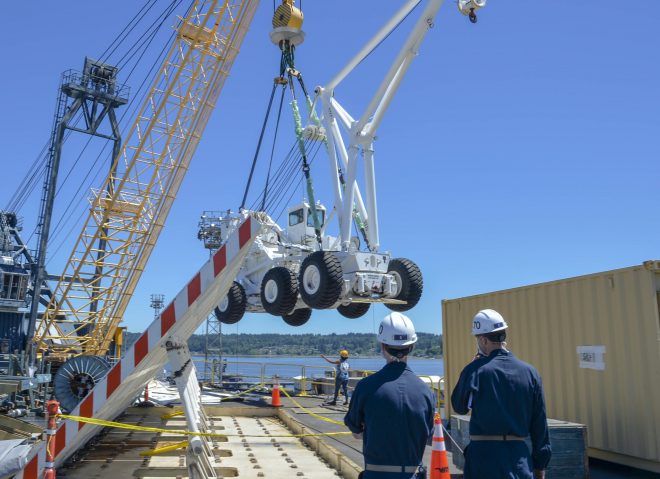
 news.usni.org
news.usni.org
They are slated to be completed by November 2029.

Navy Issues Contracts in First Step Toward $8B to Rebuild Two Public Shipyards - USNI News
The Navy issued the first contracts to companies that will compete for about $8 billion worth of military construction projects at shipyards in Hawaii and Washington state, two of its four public shipyards long overdue for modernization that can support the fleet’s growing repair and maintenance...
- Joined
- 9 October 2009
- Messages
- 21,976
- Reaction score
- 13,638

Berger: I’ll accept a smaller Marine Corps to make light amphibs happen
“We have to provide the Marines what they need to operate in that environment," Commandant of the Marine Corps David Berger said of the need for light amphibious warships. "And if that [means] less Marines, I’m willing to do that. I don’t want to do that."www.defensenews.com
Forest Green
ACCESS: Above Top Secret
- Joined
- 11 June 2019
- Messages
- 9,530
- Reaction score
- 17,483
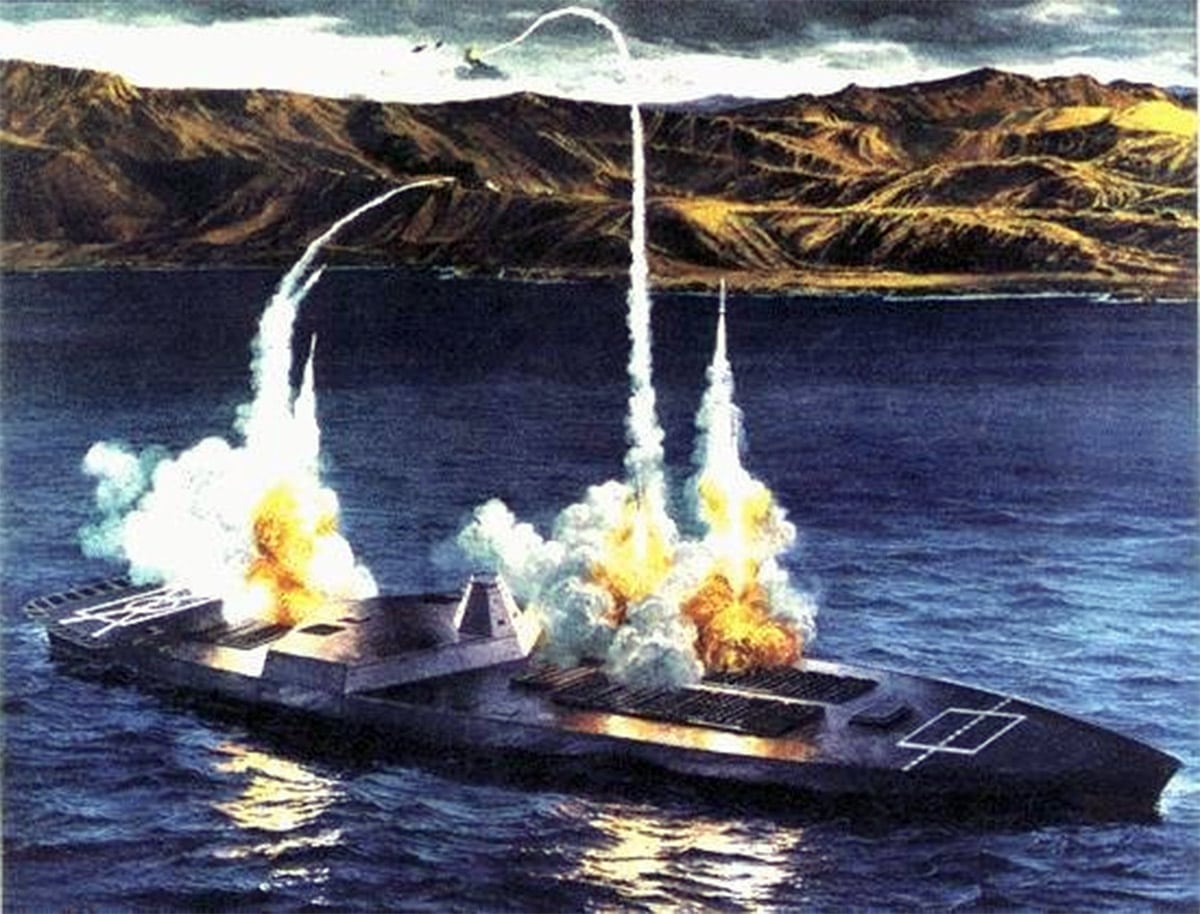
Latest Details on South Korea's Arsenal Ship Project - Naval News
On October 6, the ROK Joint Chiefs of Staff (JCS) officially announced a plan to develop ‘customized deterrente’ in response to North Korea's growing nuclear weapons and missile capabilities. To fulfill this goal, the JCS confirmed plans to procure arsenal ships as a long-term project to counter...
Forest Green
ACCESS: Above Top Secret
- Joined
- 11 June 2019
- Messages
- 9,530
- Reaction score
- 17,483

Navy to pick new torpedo in March 2022 following delay - Breaking Defense
Northrop Grumman says it submitted its Very Lightweight Torpedo proposal in November.
- Joined
- 9 October 2009
- Messages
- 21,976
- Reaction score
- 13,638
Fullbore Friday
A little different topic this Fullbore Friday as ... I want to make you mad. I won't be subtle or clever here ... thanks to a simple tweet ...
- Joined
- 9 October 2009
- Messages
- 21,976
- Reaction score
- 13,638

Don’t miss out on coverage of the annual surface Navy conference
We're on the ground at the Surface Navy Association's symposium to ask military leaders and political decision-makers whether the service has the competitive edge to defeat America's adversaries in a potential conflict.
14yellow14
ACCESS: Confidential
- Joined
- 7 November 2020
- Messages
- 53
- Reaction score
- 182
- Joined
- 16 April 2008
- Messages
- 9,606
- Reaction score
- 14,502
The whole brief that slide is from is here: https://www.secretprojects.co.uk/threads/usn-large-surface-combatant-delayed.31516/page-6
That's probably a better thread for continued discussion, since DDG(X) is very much related to Large Surface Combatant, not just generic surface ship enhancements.
That's probably a better thread for continued discussion, since DDG(X) is very much related to Large Surface Combatant, not just generic surface ship enhancements.
- Joined
- 16 April 2008
- Messages
- 9,606
- Reaction score
- 14,502
Strike-length, judging by the canister he pulled out of the model. I think the USN is not interested in other cell lengths because that creates problems in the logistics chain. Different ships need different types of canisters for the same missiles, which is undesirable.
Come to think of it, has anyone bought Tactical or Self-Defense Mk 41 at all? Or are they all Strike-Length?
I finally did some digging and found at least one
Major Defense Equipment (MDE):
Thirty-thirty (33) Evolved Seasparrow Missiles (ESSMs)
Six (6) Evolved Seasparrow Telemetry Missiles
Three (3) MK 41 Vertical Launching Systems (VLS), tactical version, baseline VII
Last edited:
Firefinder
ACCESS: Top Secret
- Joined
- 5 October 2019
- Messages
- 1,049
- Reaction score
- 1,902
I know that Japan had bought Tactical Length MK41 as well.Strike-length, judging by the canister he pulled out of the model. I think the USN is not interested in other cell lengths because that creates problems in the logistics chain. Different ships need different types of canisters for the same missiles, which is undesirable.
Come to think of it, has anyone bought Tactical or Self-Defense Mk 41 at all? Or are they all Strike-Length?
I finally did some digging and found at least oneconfirmedproposed sale of a Tactical Length Mk 41. No doubt there were more.
Major Defense Equipment (MDE):
Thirty-thirty (33) Evolved Seasparrow Missiles (ESSMs)
Six (6) Evolved Seasparrow Telemetry Missiles
Three (3) MK 41 Vertical Launching Systems (VLS), tactical version, baseline VII
They didn't really want "offensive" weapons like the Tomahawks due to that one Article in their constitution relating to their military IRC. Both their Akizuki and Hyūga-class destroyers are the two I know of force sure.
- Joined
- 16 April 2008
- Messages
- 9,606
- Reaction score
- 14,502
I know that Japan had bought Tactical Length MK41 as well.Strike-length, judging by the canister he pulled out of the model. I think the USN is not interested in other cell lengths because that creates problems in the logistics chain. Different ships need different types of canisters for the same missiles, which is undesirable.
Come to think of it, has anyone bought Tactical or Self-Defense Mk 41 at all? Or are they all Strike-Length?
I finally did some digging and found at least oneconfirmedproposed sale of a Tactical Length Mk 41. No doubt there were more.
Major Defense Equipment (MDE):
Thirty-thirty (33) Evolved Seasparrow Missiles (ESSMs)
Six (6) Evolved Seasparrow Telemetry Missiles
Three (3) MK 41 Vertical Launching Systems (VLS), tactical version, baseline VII
They didn't really want "offensive" weapons like the Tomahawks due to that one Article in their constitution relating to their military IRC. Both their Akizuki and Hyūga-class destroyers are the two I know of force sure.
But we know the Kongos have strike length because of SM-3.
- Joined
- 9 October 2009
- Messages
- 21,976
- Reaction score
- 13,638
Via Cajer over at TankNet:
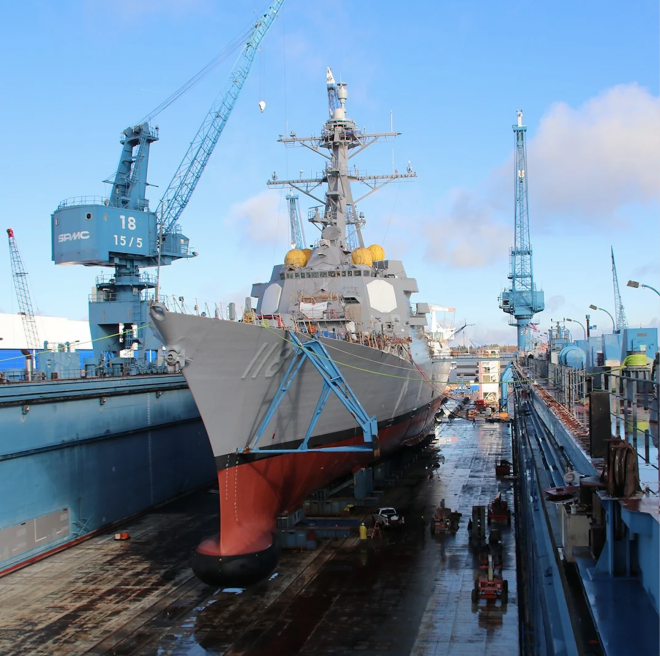
Navy Wants to Buy Two Arleigh Burkes a Year While Developing DDG(X) Concept - USNI News
The Navy is committed to buying two Flight III Arleigh Burke-class destroyers per year in tandem with developing its new DDG(X) program, the top surface warfare requirements officer said Wednesday. While the first priority for the Navy’s surface warfare division director on the chief of naval...news.usni.org
aonestudio
I really should change my personal text
- Joined
- 11 March 2018
- Messages
- 2,964
- Reaction score
- 7,493
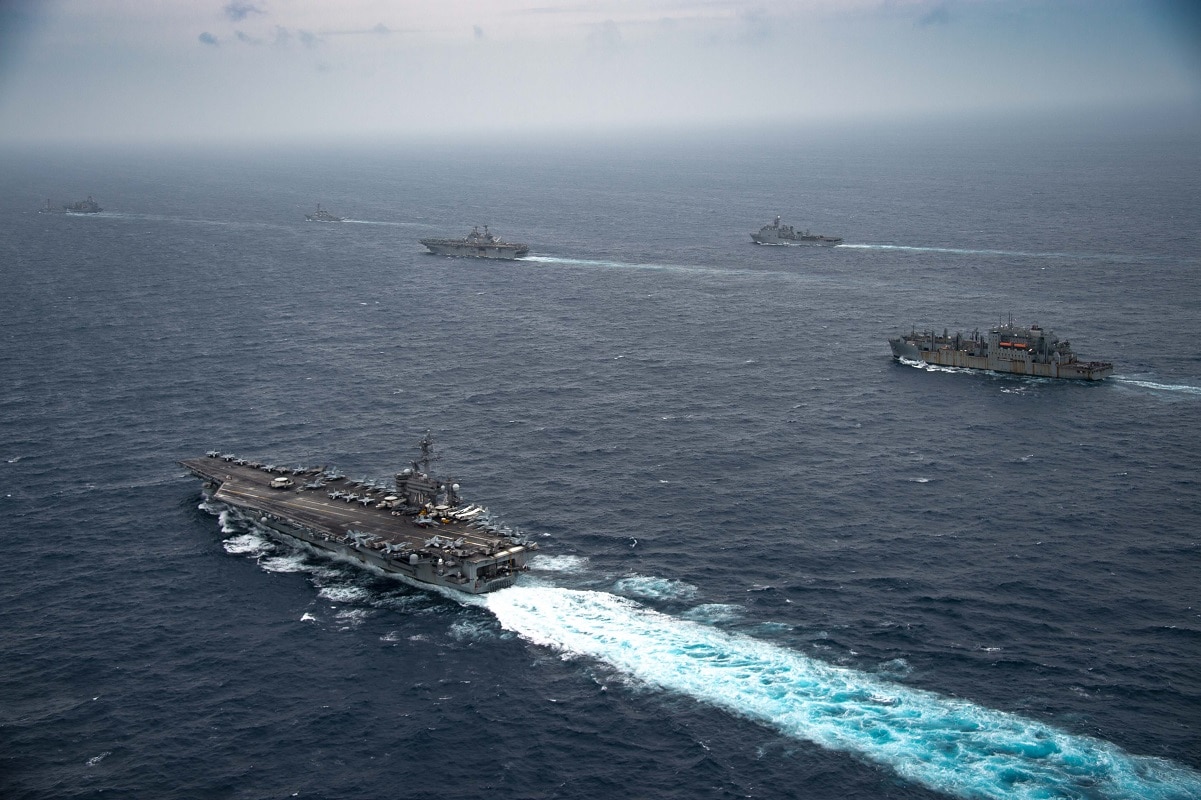
U.S. Navy CNO: ‘We Need a Naval Force of Over 500 Ships’ - Naval News
The U.S. Navy needs a fleet of more than 500 ships to meet its commitments to the soon-to-be released National Defense Strategy, Chief of Naval Operations Adm. Mike Gilday said on Friday.
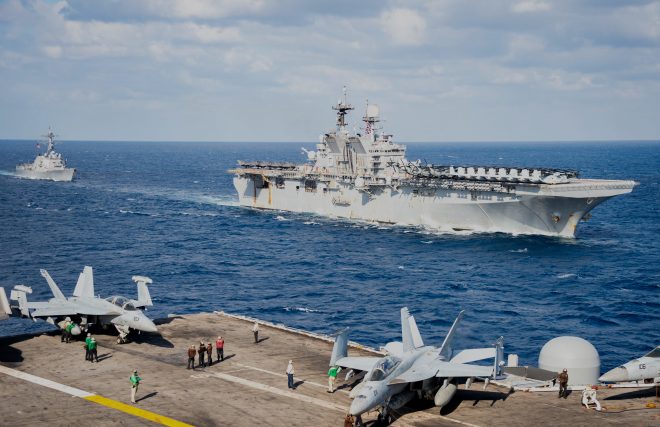
CNO Gilday: ‘We Need a Naval Force of Over 500 Ships’ - USNI News
SAN DIEGO, Calif. – The U.S. Navy needs a fleet of more than 500 ships to meet its commitments to the soon-to-be released National Defense Strategy, Chief of Naval Operations Adm. Mike Gilday said on Friday. “I’ve concluded – consistent with the analysis – that we need a naval force of over 500...
- Joined
- 9 October 2009
- Messages
- 21,976
- Reaction score
- 13,638
Opinion | America Needs a Bigger Navy
The disconnect between U.S. commitments and the current fleet is huge.
What Does a Decaying Empire Look Like?
There reaches a point where having a ship put to sea in peacetime, regardless of her mission short of directly saving human lives, is a net ...
- Joined
- 9 October 2009
- Messages
- 21,976
- Reaction score
- 13,638
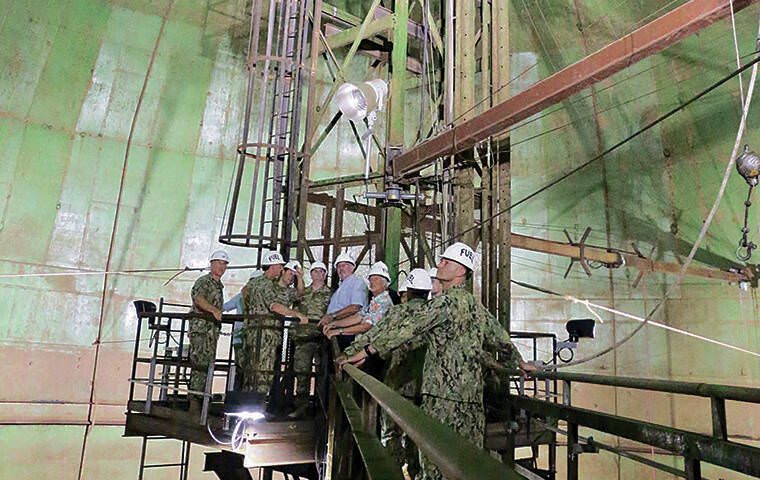
US Navy To Shutdown World's Largest Underground Bunker Fuel Tanks
by John Konrad (gCaptain) Today US secretary of Defense Lloyd J. Austin announced the closure of the Red Hill fuel storage depot in Hawaii.
 gcaptain.com
gcaptain.com
Forest Green
ACCESS: Above Top Secret
- Joined
- 11 June 2019
- Messages
- 9,530
- Reaction score
- 17,483
- Joined
- 16 April 2008
- Messages
- 9,606
- Reaction score
- 14,502
I thought this thread was for USN-specific issues.
(We really could do with a clean-up of the US Navy threads here. They're kind of a jumble, unfortunately.)
Forest Green
ACCESS: Above Top Secret
- Joined
- 11 June 2019
- Messages
- 9,530
- Reaction score
- 17,483

Spending bill would add five ships, 12 Super Hornets to Navy acquisition plans
A federal spending package would give the Navy a significant boost in funding for ships and aircraft, after lawmakers were largely underwhelmed by the service's budget request last spring.
- Joined
- 9 October 2009
- Messages
- 21,976
- Reaction score
- 13,638
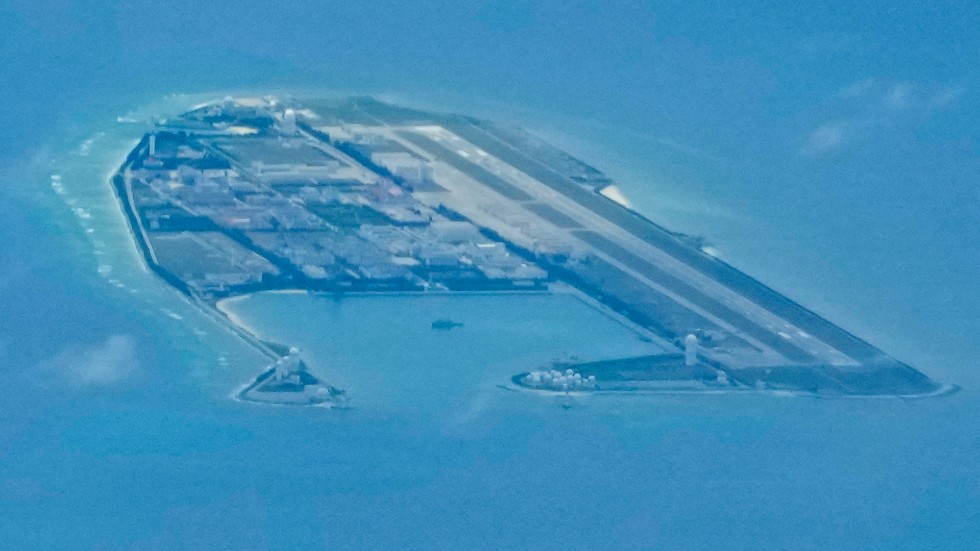
US admiral says China fully militarized disputed isles in South China Sea
OVER THE SOUTH CHINA SEA — China has fully militarized at least three of several islands it built in the disputed South China Sea, arming them with anti-ship and anti-aircraft missile systems, lase…
Forest Green
ACCESS: Above Top Secret
- Joined
- 11 June 2019
- Messages
- 9,530
- Reaction score
- 17,483

Navy's shipbuilding request may be 'violation of law,' Inhofe warns - Breaking Defense
Expect Congress to voice its displeasure when Navy leadership testify on Capitol Hill.
View: https://twitter.com/JimInhofe/status/1508578131120168960
Forest Green
ACCESS: Above Top Secret
- Joined
- 11 June 2019
- Messages
- 9,530
- Reaction score
- 17,483
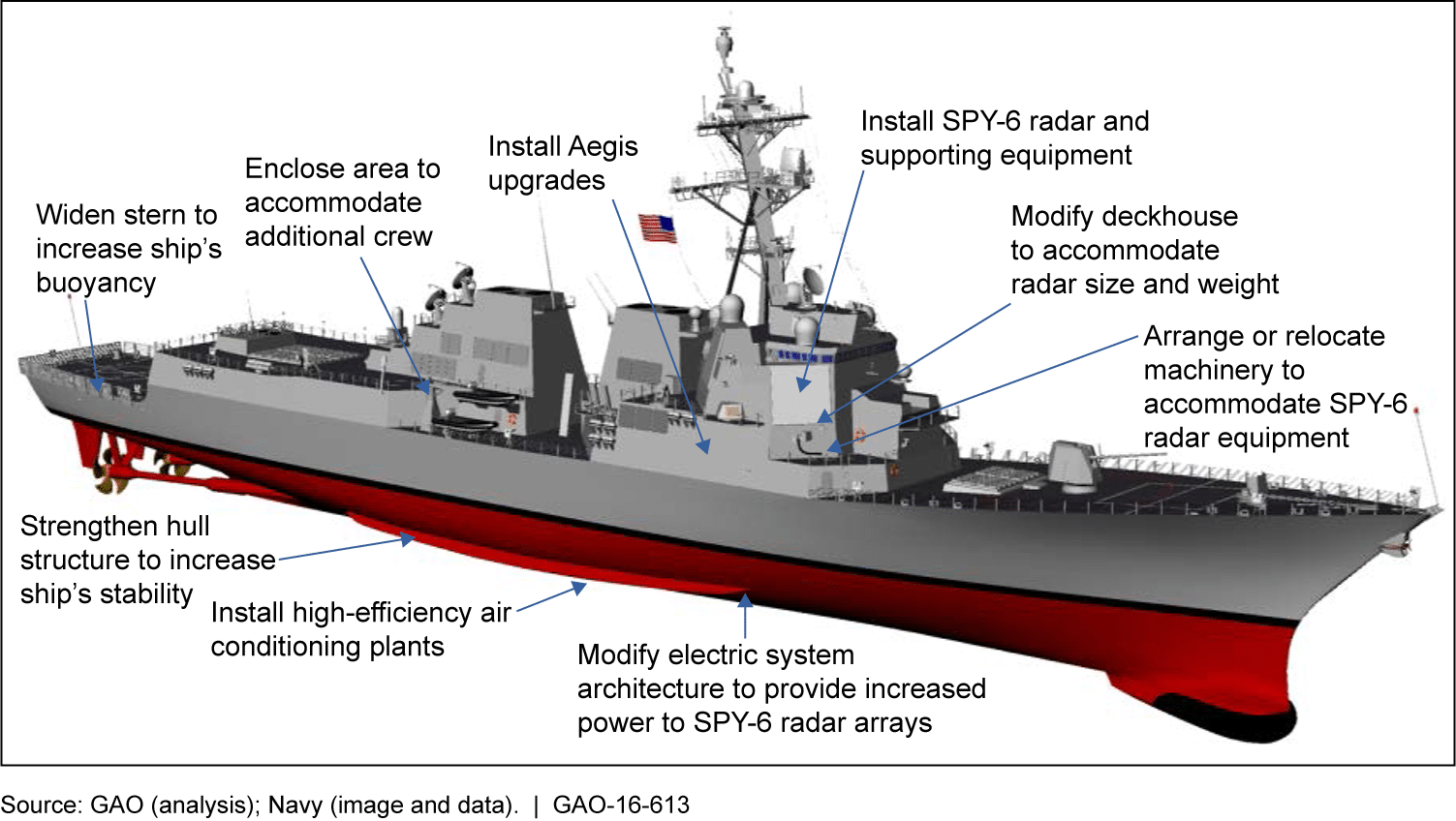
U.S. Navy’s Future Large Scale Combatant Force-Level Goals - Naval News
The U.S. Navy’s Large Surface Combatant force consists of three destroyers: Arleigh Burke-class , DDG 1000 Zumwalt and the upcoming DDG(X).
- Joined
- 21 April 2009
- Messages
- 13,759
- Reaction score
- 7,698
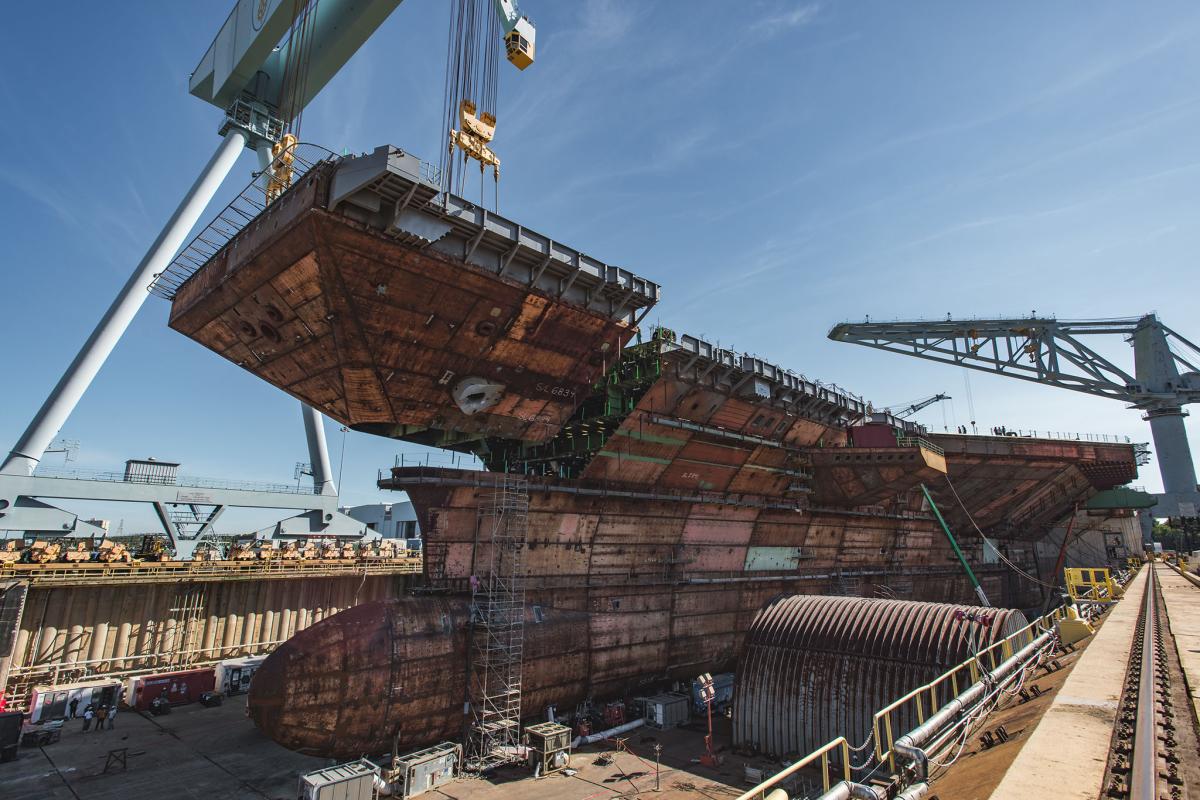
The Nation Needs a Real Plan to Grow the Navy
The Department of the Navy needs a serious, strategy-driven shipbuilding plan; and Congress must provide consistent funding to turn that plan into real ships.
isayyo2
Lurker alert
- Joined
- 24 November 2011
- Messages
- 1,131
- Reaction score
- 2,331
ARLINGTON, Va. — The Aerosonde unmanned aerial system has been deployed on a U.S. Navy Arleigh Burke-class guided-missile destroyer serving in the U.S. 7th Fleet, giving the Flight I/II DDG — which does not have the organic helicopter facilities of the Flight IIA and subsequent versions of the DDG — an organic aerial surveillance capability.
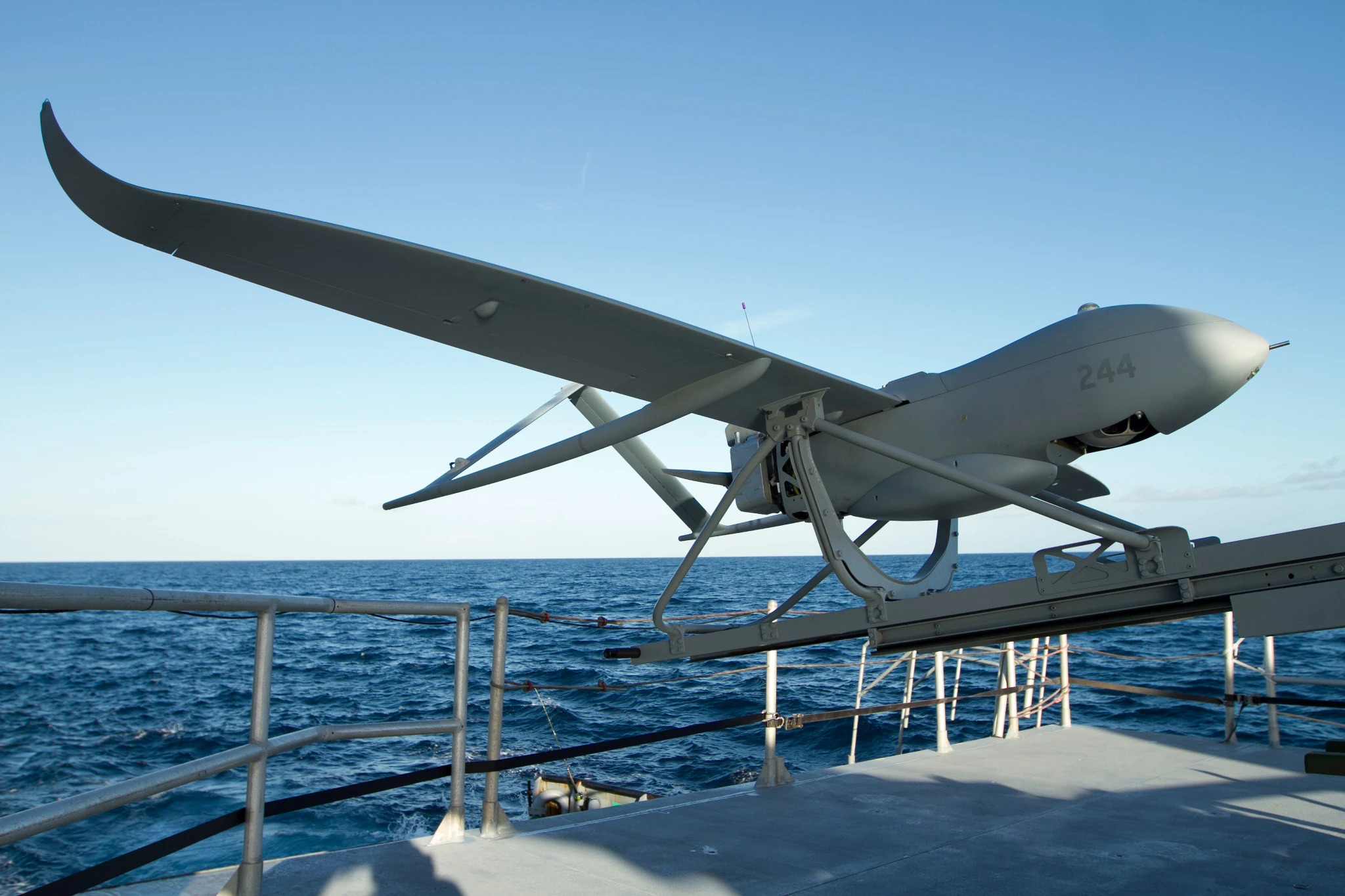
Navy’s Flight I/II DDGs Get UAS Capability with Textron’s Aerosonde - Seapower
Navy’s Flight I/II DDGs Get UAS Capability with Textron’s Aerosonde Front Page
With the modernization cancelled, all Flight I/II vessels will be gone by ~ 2034?
NGAD and B21
ACCESS: Restricted
- Joined
- 6 April 2022
- Messages
- 1
- Reaction score
- 0
In the budget application of fiscal year 2023, USN only has 2ddg, and the number of f35c purchased is far from enough. At the current speed of launching 2-3 warships every year, USN's ability can not meet the requirements. An ideal state is to launch 4ddg and 2ffg every year
Last edited by a moderator:
Probably most of them, yes. I think the USN is only interested in updating the IIAs; it's felt the previous flights need too much work to be modernized. Hopefully FFGX can get a second yard to increase production to make up for the coming shortfall.
shin_getter
ACCESS: Top Secret
- Joined
- 1 June 2019
- Messages
- 1,109
- Reaction score
- 1,492
Shipcount is a meaningless measure. The ability of the combined force to achieve missions within a budget is what matters.
Blindly chasing numbers is asking for a hollow force of parade pieces that can not stand real conflict. Recent event have shown how disastrous this can be.
-----
With reduction in relative budgetary position, traditional means of force superiority is increasingly difficult. Leveraging sole ownership of low cost space launch for "A2AD" that spans entire oceans is likely the better way.
- Joined
- 16 April 2008
- Messages
- 9,606
- Reaction score
- 14,502
And if you're making numbers by retaining ships that don't contribute to warfighting capacity [cough] LCS [/cough] then you're just spending money without improving the ability to execute the mission.
There's a sunk cost fallacy at work here (pun not intended). Yes, we spent an inordinate sum on LCS that in hindsight should have been spent elsewhere. But it doesn't make sense to continue funding them once it becomes clear that they aren't contributing to the mission.
There's a sunk cost fallacy at work here (pun not intended). Yes, we spent an inordinate sum on LCS that in hindsight should have been spent elsewhere. But it doesn't make sense to continue funding them once it becomes clear that they aren't contributing to the mission.
Firefinder
ACCESS: Top Secret
- Joined
- 5 October 2019
- Messages
- 1,049
- Reaction score
- 1,902
The Independence class is finding a solid niche is being Marine Fast Taxis, minesweepers, and low level area patrol boats. Helps that not only do they work, that big deck and hanger of theirs allows for nearly every copter in the Force to use them.And if you're making numbers by retaining ships that don't contribute to warfighting capacity [cough] LCS [/cough] then you're just spending money without improving the ability to execute the mission.
There's a sunk cost fallacy at work here (pun not intended). Yes, we spent an inordinate sum on LCS that in hindsight should have been spent elsewhere. But it doesn't make sense to continue funding them once it becomes clear that they aren't contributing to the mission.
Hell they can even squeez in a few of those Robo NSSM cars in a pinch as well. Which works nicely with the Marines new doctrine.
Those LCS are more then earning their keep.
The fucking Freedoms, which are the 8 to 10 being retired, on the other hand...
Why did we buy that class again?
- Joined
- 3 June 2011
- Messages
- 18,338
- Reaction score
- 12,240
One reason I wish they'd hadn't f--ked up the Zumwalt program - that big flight deck and hangar.The Independence class is finding a solid niche is being Marine Fast Taxis, minesweepers, and low level area patrol boats. Helps that not only do they work, that big deck and hanger of theirs allows for nearly every copter in the Force to use them.And if you're making numbers by retaining ships that don't contribute to warfighting capacity [cough] LCS [/cough] then you're just spending money without improving the ability to execute the mission.
There's a sunk cost fallacy at work here (pun not intended). Yes, we spent an inordinate sum on LCS that in hindsight should have been spent elsewhere. But it doesn't make sense to continue funding them once it becomes clear that they aren't contributing to the mission.
Hell they can even squeez in a few of those Robo NSSM cars in a pinch as well. Which works nicely with the Marines new doctrine.
Those LCS are more then earning their keep.
The fucking Freedoms, which are the 8 to 10 being retired, on the other hand...
Why did we buy that class again?
- Joined
- 16 April 2008
- Messages
- 9,606
- Reaction score
- 14,502
The Independence class is finding a solid niche is being Marine Fast Taxis, minesweepers, and low level area patrol boats. Helps that not only do they work, that big deck and hanger of theirs allows for nearly every copter in the Force to use them.And if you're making numbers by retaining ships that don't contribute to warfighting capacity [cough] LCS [/cough] then you're just spending money without improving the ability to execute the mission.
There's a sunk cost fallacy at work here (pun not intended). Yes, we spent an inordinate sum on LCS that in hindsight should have been spent elsewhere. But it doesn't make sense to continue funding them once it becomes clear that they aren't contributing to the mission.
Hell they can even squeez in a few of those Robo NSSM cars in a pinch as well. Which works nicely with the Marines new doctrine.
Those LCS are more then earning their keep.
The fucking Freedoms, which are the 8 to 10 being retired, on the other hand...
Why did we buy that class again?
Yeah, I'm with you. I thought about making that distinction and decided to err on the side of brevity.
The Independence class is finding a solid niche is being Marine Fast Taxis, minesweepers, and low level area patrol boats. Helps that not only do they work, that big deck and hanger of theirs allows for nearly every copter in the Force to use them.And if you're making numbers by retaining ships that don't contribute to warfighting capacity [cough] LCS [/cough] then you're just spending money without improving the ability to execute the mission.
There's a sunk cost fallacy at work here (pun not intended). Yes, we spent an inordinate sum on LCS that in hindsight should have been spent elsewhere. But it doesn't make sense to continue funding them once it becomes clear that they aren't contributing to the mission.
Hell they can even squeez in a few of those Robo NSSM cars in a pinch as well. Which works nicely with the Marines new doctrine.
Those LCS are more then earning their keep.
The fucking Freedoms, which are the 8 to 10 being retired, on the other hand...
Why did we buy that class again?
Yeah, I'm with you. I thought about making that distinction and decided to err on the side of brevity.
How are is the Independence Class being used as minesweeper?
I didn't think the MIW package was delivered yet??
I'm not looking to argue, just looking to learn.
Similar threads
-
Russia tests Voevoda missile and vows to build new offensive forces (2 stories)
- Started by bobbymike
- Replies: 0
-
Navy Seeks Rail Guns, Lasers, Cruise Missiles To Improve Pacific Firepower
- Started by Triton
- Replies: 591
-
-
-

